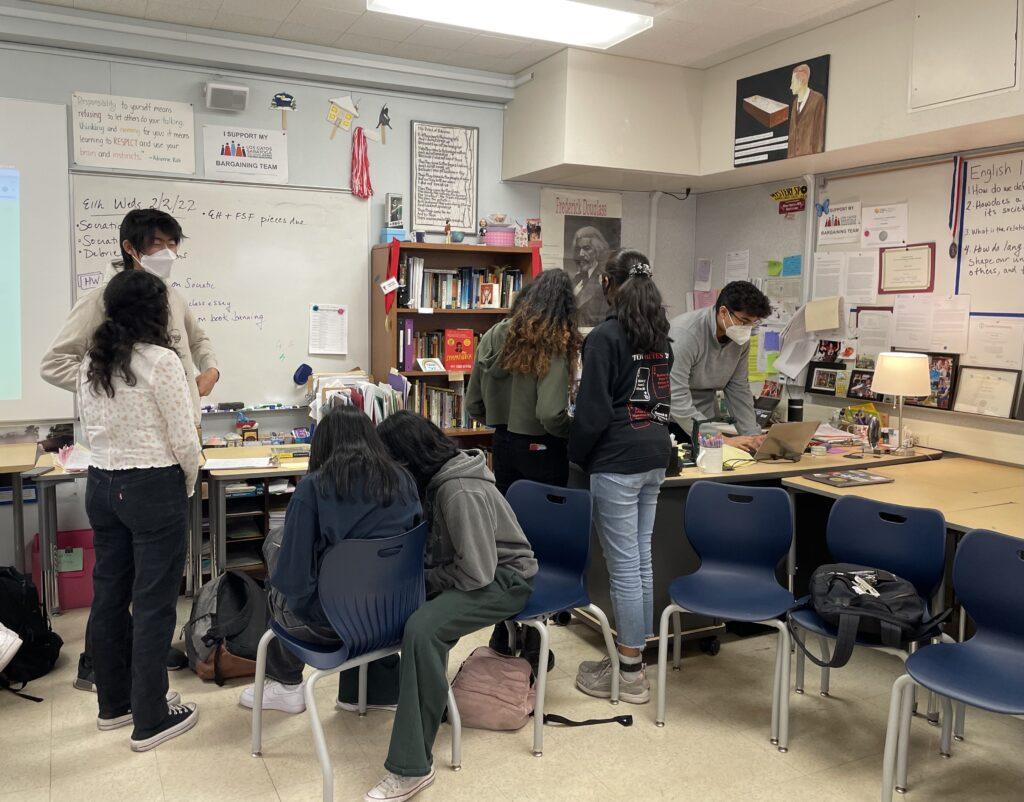During a recent tutorial, English 11 Honors and Creative Writing teacher Amy Keys’ classroom was a hub of action. Throughout the 40-minute period, students on the editorial board of the school’s art and literary magazine, Soundings, were discussing upcoming deadlines, editing student submissions and finalizing artistic choices.
Soundings has featured selected students’ submissions since 1986, and provided opportunities for students to express their creativity beyond their English and art classes. In the 2019-2020 school year, however, Soundings did not publish the magazine because students were unable to collaborate in person.
This year, the magazine will resume, led by Keys and an editorial board consisting of Creative Writing and Falcon students. The preliminary deadline for submissions was Jan. 6, and the submitted works will receive feedback from the board before the final deadline on March 1, after which the student body will select the entries. Currently, the editorial board is still finalizing the size, material of the magazine and providing feedback for submissions.
For senior Maanvi Chawla, who helps design and advertise the magazine, the most exciting part of working on Soundings has been “getting to see the art and writing that students from all grades submit.”
Keys said that the editorial staff has been self-sufficient in running and planning the magazine, including recognizing what needs to be done, making task ladders to carry out their to-do list, discussing and debating choices for the size and numbers of copies, gathering submissions and advertising the magazine.
“At this point, I pretty much just stand back and try to stay out of their way as they bring this wonderful thing to bear,” Keys said.
To select submissions, the editorial board has developed a rubric that is similar to ones used in the past, but has altered it based on certains trends the members have observed among the submissions. Each piece will be read and reviewed by several members, and selections for publishing will be decided by all of the staff. After finalizing pieces, the staff will begin to work on the page layouts, and choose artworks that complement each other based on its imagery, idea and style.
In terms of editing and planning for the publishing of the magazine, the roles of the majority of the students require roughly two to three hours each week. Students also meet once a week during tutorial to discuss deadlines, and stay in close communication with the team.
Keys said that working on Soundings has provided a sense of community and normalcy this year for her and her students. Senior Madhu Ayyer, who is involved in the journal’s logo, layout designing and the general artistic aspects of the magazine, said that she hopes to expand her social interactions through this project.
“A lot of people from Soundings are recruited from Creative Writing, so it’s really fun working with people you already know and are friends with, since you can spend more time with them outside of a more academic setting,” Ayyer said.
Keys said that letting students take the lead instead of giving specific directions and deadlines on this long-term project has allowed her to acknowledge and appreciate the talents within the student organization and their ability to work together.
“The editorial staff is extremely impressive,” Keys said. “The skills they’ve learned more than equip them for this task, and their initiative, organization, appetite for creative and critical work and passion for language and literature make them a total delight to work with.”


























